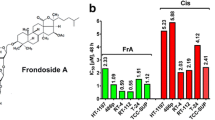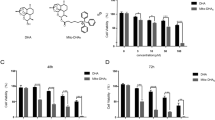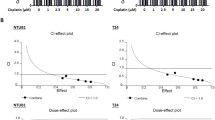Abstract.
We examined a human urothelial cancer T24 cell line, which was exposed to clinically achievable concentrations of Taxol and detected the lethal effect of Taxol as measured by a cytotoxic dose-response curve. Marked nuclear condensation and the fragmentation of chromatin were observed by DAPI stain, DNA ladder formation, and flow cytometry at an LC90 concentration of 0.8 µg/ml Taxol, which also induced a G2/M arrest. In response to Taxol-treatment, caspase-9 activity increased at 8 h, and both caspase-2 and -3 activities were increased twofold relative to control cultures at 16 h. Moreover, treatment with the broad-spectrum caspase inhibitor (z-VAD-fmk) or the caspase-9 specific inhibitor (z-LEHD-fmk) effectively protected T24 cells against Taxol-triggered apoptosis. Furthermore, the phosphorylation of Bcl-2 and Bcl-XL proteins in Taxol treated cells was detected at 8 h. In contrast, Taxol had no effect on the levels of Fas and FasL proteins and neither antagonistic, anti-Fas antibody affected Taxol-induced apoptosis. These results suggest that, following the phosphorylation of Bcl-2 and Bcl-XL proteins, Taxol-induced apoptosis is induced through the mitochondria-dependent pathway in T24 cells.
Similar content being viewed by others
Author information
Authors and Affiliations
Additional information
Electronic Publication
Rights and permissions
About this article
Cite this article
Yuan, SY., Hsu, SL., Tsai, KJ. et al. Involvement of mitochondrial pathway in Taxol-induced apoptosis of human T24 bladder cancer cells. Urol Res 30, 282–288 (2002). https://doi.org/10.1007/s00240-002-0263-4
Received:
Accepted:
Issue Date:
DOI: https://doi.org/10.1007/s00240-002-0263-4




